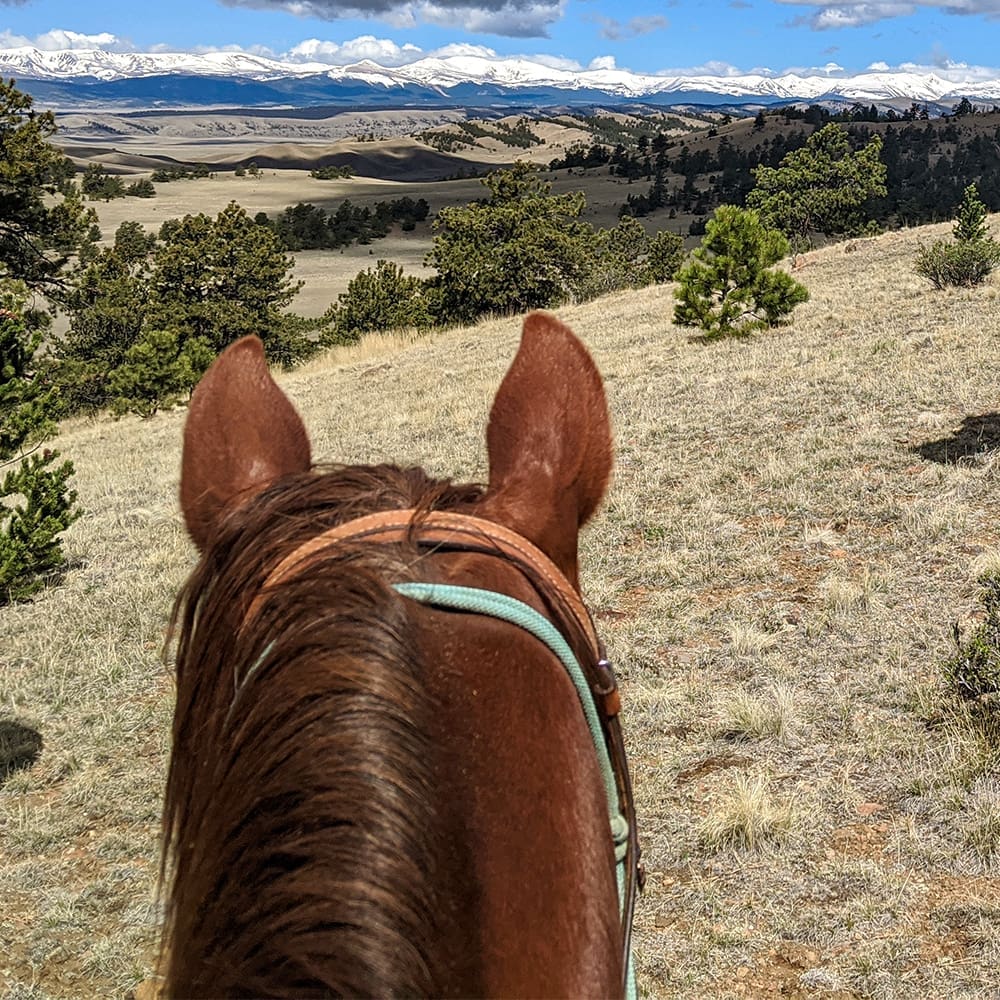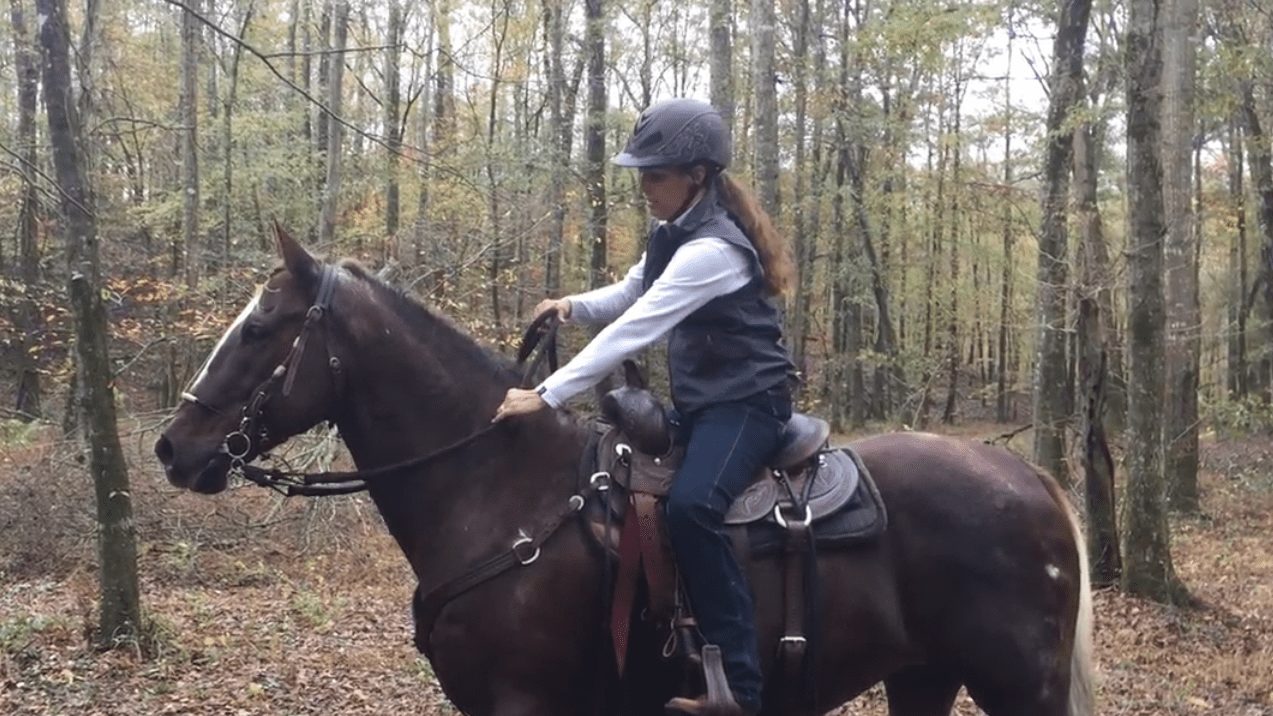I would love to camp with my horse, but it feels like a scary step to take. I have taken my horse on daylong trail rides, but I haven’t stayed overnight. I would like to try some trails that are too far away to ride and get home in the same day. What do I need to know as a first time horse camper? What’s different than packing for a daylong trail ride and how do I need to prepare myself and my horse so that all can go as smoothly as possible?
Answer:If you haven’t camped with your horse before, it can seem like a big undertaking with lots of logistics. If you break it down into steps and start with a simple trip, I trust that you can handle it.
In any camping environment, you need to make sure you plan for food, water and shelter for horses and humans. That’s it. How complicated you make each of those simple needs is up to you. You can keep it all simple, and have others help along the way, or you can decide to master the wilderness and pack all of your needs far into the forest.
I advise starting small and working up to a more rustic adventure. Here, I’ll share some info about how to prep your horse for overnight stays then tell you the camping progression I’d suggest.
At each “level” of camping, keep notes about what you needed to have with you and what you forgot. With every trip, you’ll figure out how you can organize more and you’ll find out what little things to bring that will help you feel more comforted on the trail.
Prepping Your HorseNo matter what type of camping you choose, the experience of being away from home will be a great lesson time for your horse. He’ll need to get used to sleeping away from home.
You’ll find out if your horse will keep his usual routine, how he’ll do if there’s an unknown horse next to him, if he’ll challenge the fencing or enclosures, and lots of other details about your horse’s habits away from his usual abode. What you learn about your horse during your first overnights will help you plan for the type of corrals and environments that will be best suited for him. You may learn that you need to teach him to stand tied; you may learn that he will challenge temporary panels. Find out how your horse reacts and choose the next step for him based on his reactions and behaviors away from home.
If you overnight in a place where your horse is stabled and near horses he doesn’t know, make sure to take some precautions. Not all horses have been well socialized, so it’s important to keep an eye on your horse if he might be housed at a place where a more aggressive horse may be penned beside him. Ask the facility manager about who your horse will be housed next to, make sure to watch your horse (to ensure he isn’t an aggressor), and don’t be afraid to ask to move if needed.
Start EasyPlan your first overnight trip at a ranch or resort that offers accommodations (a lodge or cabins) for you and pens for your horse. This way you don’t have to think about corrals or tents and gear. You can have a 5-star experience while you practice packing for overnight needs for your horse. You’ll also get to see how your horse acts in a new environment.
This is the kind of ranch we like to work with as a place to shoot my TV show—the horses have great pens to stay in and our cast and crew get to be a little bit pampered. The Sister Creek Ranch near San Antonio, Texas hosted us and has a set up like this. In Massachusetts, the Inn at Richmond and adjacent Berkshire Equestrian Center have a similar set up. There are stalls available and the accommodations are great. The trails are accessible without having to trailer outside of camp.
At each level, we have to plan for food, water and shelter for you and your horse. At this level, you are well taken care of. Your horse’s shelter and water are easy to plan. You’ll still need to plan for your horse’s feed and get used to packing all that you’ll need to ride and care for your horse.
Camp TimeIf you’re ready for a little more adventure, look for a campground that has corrals. Some of the nicer resorts also offer camping options. You’ll stay in a tent or RV, with your horse in a nearby corral.
Securing your horse overnight is one of the biggest challenges and this option still rules out that obstacle. You can build up your camping experience without worrying more about your horse. You will still need your horse’s food—just like the starting level.
The only change from the last level is packing more for your own overnight. You might start by camping in your trailer’s living quarters then step up (or down) to a tent. Make sure to pack your own food and find recipes to cook at the camp or pack pre-packaged meals that you can keep with you in a cooler.
Vehicle AssistedIn this next step, you can stay farther away from a “civilized” campground, but you’ll still have access to your vehicle. Having your vehicle nearby means you can still keep coolers with you.
The biggest change here is securing your horse overnight. You’ll be away from a pre-planned campground. You have options such as tying to the trailer, setting up portable corrals or setting up a highline.
I’m presuming that you have a well-trained trail horse that ties well without pawing or carrying on; if not, you have some work to do at home. You can leave your horse tied to the trailer overnight. You’ll give him just enough lead line to allow him to lie down and allow him to get his head down to eat hay. By putting his head down to the ground to eat, you’ll find out how long to leave the line—if the line is long enough to allow him to eat, he’ll also find that he can lie down. While you shorten the lead while you’re saddling or working with your horse, it’s not good for your horse to leave the rope so short overnight.
A high line is just that—a line tied between two trees or poles (make sure to attach with tree-safe methods). This is required in many national forests where you can’t tie to trees (horses often chew on and destroy bark and roots).
You can build a temporary corral with panels designed for portability. If you’ll always stay near your vehicle, you can even take full-sized panels. I’ve also seen electric fencing used—if you choose this, make sure that your horse is very comfortable staying in electric tape without challenging it. Find the containment system that works well for your horse and make sure to practice that containment at home first!
In the OpenNow we switch to multi-day trips into wilderness areas—I consider this the pro level. You’ll need lots of experience under your belt before you approach this level. You’ll need permits, sometimes insurance, you’ll need to file your trip plans. There might be restrictions as to the number of heartbeats allowed in a specific camping area, counting humans and all animals.
Camping in the open is a big step because you need to know about backpacking and pack animals. You need to decide how much you’ll need with you and if you’ll need an extra animal with you to help pack the gear. It is possible to start out small and for one horse and human to carry what you need, but it’s very important to not overload your horse—especially if you’ll be going over tough terrain.
You’ll need to ask your veterinarian how much weight your horse can carry comfortably then decide if you can pack all that you need and stay under that number.
If you do need a packhorse with you on your trip, it’s best to go along with a practiced guide at first. Learn all you can about packing from a pro who can show you what to do along the way. There are many mistakes to be made!
Since you won’t have access to a bale of hay in your truck, you’ll need to know the trail well—and know what grazing areas and water sources are available. All of those factors will tell you how much you need to take with you. If you have to pack in your horse’s feed (like cubes or pellets), you’ll probably need more pack animals.
The farther you are from civilization, the more planning you’ll need to do ahead of time. If you go to a state park or national park, consult the rangers. If you’ve never done this kind of camping, go with a professional outfitter first. You’ll be with someone who has ridden that trail and knows just what to do. When you see how the outfitter works, you’ll be more comfortable with what you need to learn to do. After you have some experience built up, you can probably talk to a ranger or guide to find out what you need to know to go it alone.
Stay as comfortable as you can, but don’t be afraid to move out of your comfort zone so that you can grow in your horsemanship experiences.



